A couple of weeks ago, someone on Twitter (I can’t remember who) mentioned that William Klein’s 1966 debut feature Who Are You, Polly Maggoo? was going to be featured as part of Vanity Fair’s 2011 Fashion in Film Festival, as part of New York City’s semi-annual Fashion Week, held every March and September. Even though I have no attachment to the world of haute couture on any detectable level and the film screened just once on September 9, that tweet served as good enough reason for me to pop in the DVD from Eclipse Series 9: The Delirious Fictions of William Klein and give it a look for this week’s column.
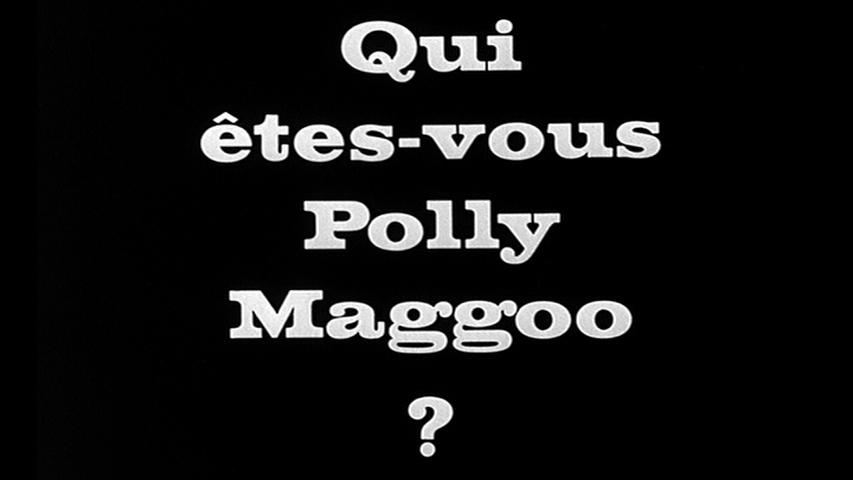
Even though this was Klein’s first film, made after he’d established a strong reputation as one of the most innovative and influential fashion photographers of his era, I hadn’t taken the time to view it prior to seeing his later films in this set: Mr. Freedom (1968) and The Model Couple (1977), both reviewed elsewhere on this site. Of the three, I’d have to go with Mr. Freedom as my favorite, because of the lunatic colors and costumes and especially its over-the-top political satire, but this is arguably Klein’s most cohesive film, though I use that word loosely. The movies in this set mostly come to us in shambles, strung together sketches and odd bursts of inspiration that I and others find entertaining for their garish pop sensibilities but many will find frustrating and indulgent.

I’ve read that Klein went on to become a respected documentarian (on subjects like Muhammad Ali and the French Open tennis tournament), and his keen eye for visual composition undoubtedly made him an asset to just about any project he worked on. But despite my enthusiasm for these films, they come with a disclaimer, that you’ll most likely find them meandering and disjointed, period pieces of their times that might have been more effective as part of a sketch-comedy TV format that hadn’t quite been invented at the time that Klein was making these movies.
Who Are You, Polly Maggoo? provides us with a unique, ironic insiders look behind the scenes of mid-1960s celebrity and modeling culture, using the prop of a low-budget TV talk show that profiles various famous people through shallow interviews, collages of film clips and manipulative voice-overs that give viewers a completely different impression than the person being featured in the program ever intended. In the film, Polly Maggoo is a world-famous supermodel at the height of her popularity, a face and image plastered all over the media but essentially an enigma to the general public (or more precisely, fashion consumers, including trend-obsessed young women and horny/frustrated middle-aged men) who find her so magnetically attractive.

The film begins with a tour de force featuring designer Isidore Ducasse (a curious homage to the 19th century proto-Surrealist poet known as Comte de Lautreamont, author of the spectacularly profane Songs of Maldoror) who wows his audience with his latest line, a series of outfits that wrap models in thin metal sheets, so sharp and angular that they cut the women’s skin – such are the demands of fashion, I suppose. We’re shuffled through the buzzing dressing rooms, hover over the crowd of awestruck admirers and behold a quasi-religious spectacle that seeks to induce a kind of aesthetic ecstasy. It’s an impressive scene, from the glossy visual elements to the frantic energy of the backstage scene, the preposterous claims of how the outfits “redefine woman” and the gullible adoration of the crowd – effectively sublime satire of an environment that Klein knew so well.
After the supermodel apotheosis, we get into the film’s ever-so-slight and whimsical narrative, involving Polly’s carefree glide through a gauntlet of love(?)struck men in hot pursuit, drawn to her by little more than a fascination with her looks, her vapid persona and apparent unattainability. Polly’s demeanor is pleasant enough; she’s hardly a diva and actually comes across as fairly well-adjusted, or at least bemused to the point of nonchalance regarding the fame and adoration that falls so easily her way.
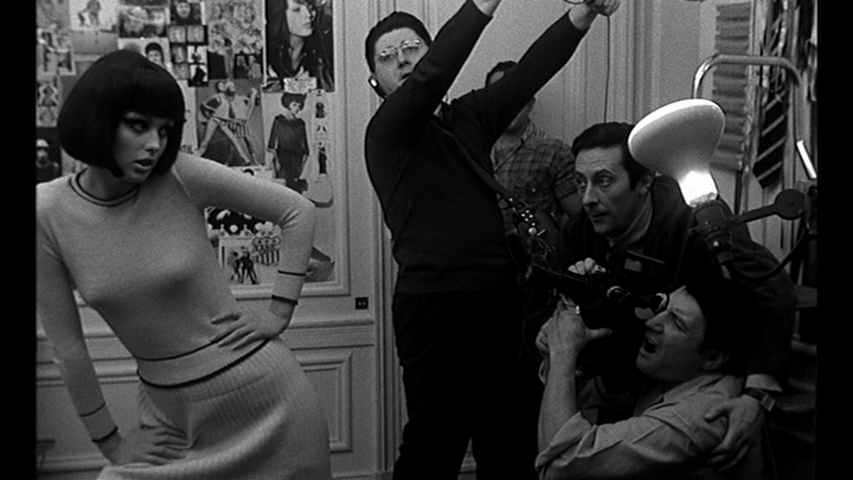
Of course, when the cameras come out, she’s a total pro and I enjoyed watching her snap into action as she picked up her spoken and unspoken cues. As she goes about telling her life story and providing what little insight she has to share about the person behind the stylish facade, the facts she relates her mean nothing to the men listening in, other than to provide an excuse for them to continue the conversation, if only for the sake of having a reason to remain in her aura. It’s embarrassingly funny to watch, but also pretty typical male behavior in the presence of a beautiful yet aloof young woman.

But it’s not just the journalists and trendies who are smitten with Polly’s effortless allure. There’s also a prince from some fictional Eastern European backwater, now subjected to the authority of the Soviet bloc, who is looking for a dream girl to fulfill the overblown fantasies of a now-irrelevant royal marriage. Knowing her only through her pictures in the magazines, the dashing aristocrat spends his time pining away in a lonely bedchamber cluttered with the latest in toys, magic tricks, A/V equipment and other vintage 60s artifacts, including wallpaper that looks like a Byzantine adaptation of cover art for the yet-to-be-released Sergeant Pepper’s Lonely Hearts Club Band.
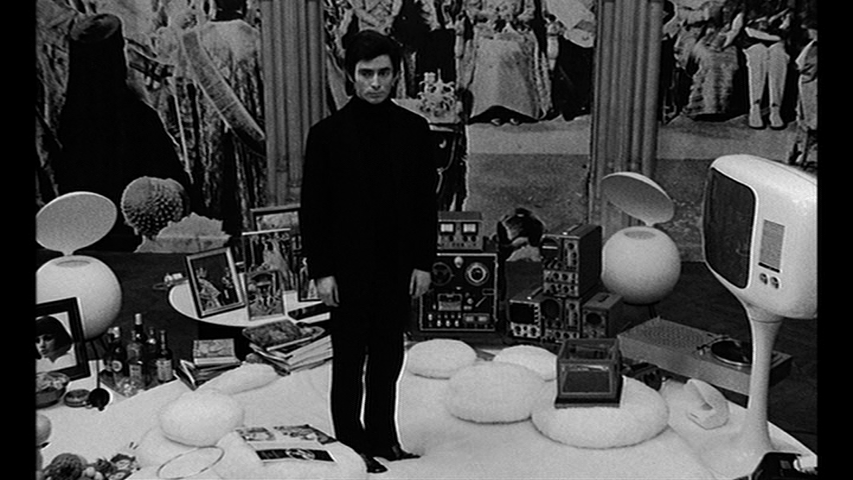
Cutting through the illusions of pretentious clothing, compelling looks and manufactured applause, Who Are You, Polly Maggoo? never stoops to provide a direct answer to its titular question, choosing instead to simply ramp up and play with the absurdity of a pop culture that, like the models themselves, we know is all surface with very little substance but which compels our skittish, rapidly shifting attention, for a few moments anyway. Near the halfway point of the film, two characters toss off a casual philosophy of media consumption: “TV shows are better than movies. People watch TV absent-mindedly. It’s like life. People watch movies too closely. That’s bad. There should be gaps. The little screen is one big gap.” I’m not sure I agree. Nor am I sure if this is what Klein believes. Or even what he’s really trying to say! But it’s an interesting thought to ponder in any case.

Is there a core value lurking beneath the absurd glossy sheen of Who Are You, Polly Maggoo? It’s hard to say, since the film never really stops posing in a confrontational stance long enough to let down its guard. Klein’s ability to connect with an audience is helped quite a bit by Dorothy McGowan, the highly successful real-life model from Brooklyn who played Polly, and whose biography closely resembles what we learn about Miss Maggoo’s background. She’s clearly built for the part and puts in a winning performance, breezily taking us into her world in front of and behind the camera through a few staged photo shoots that left me shaking my head at the kooky extremes designers will go to in order to create a striking image. This was the only movie she ever made and a role that apparently marked the end of her modeling career as well. One anecdote worth passing along is that one of her brothers was a hostage negotiator whose experience in a bank robbery situation was fictionalized and adapted for the script of Dog Day Afternoon.
Klein’s visual artistry went well beyond his work with the camera as well. This video sequence shows his flashy use of animation (a precursor to Monty Python, maybe?) as well as Dorothy/Polly’s impressive command and intuitive grasp of the powerful messages sent through seemingly simply facial expressions.
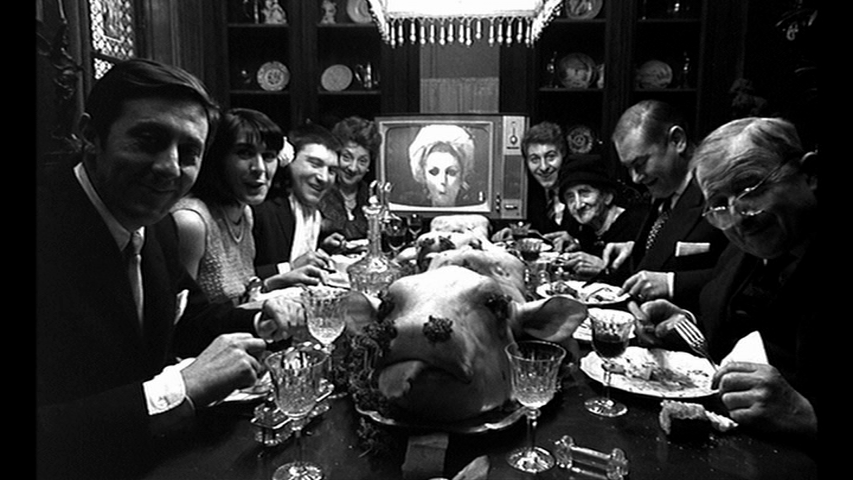
In any case, analysis of the plot developments or personality traits of its main characters is hardly the appropriate approach to a film like Who Are You, Polly Maggoo? Even more than the pointed socio-political commentary that drove Mr. Freedom and The Model Couple to their mixed-bag conclusions as cinema, this is a playful exercise in ideas that hides its more serious provocations behind broad and often clumsy farce – an ambitious, indulgent affair with scenes that don’t connect all that well with each other as far as continuity is concerned but still retain their power to dazzle any viewer willing to just be taken in by the visual audacity of it all.
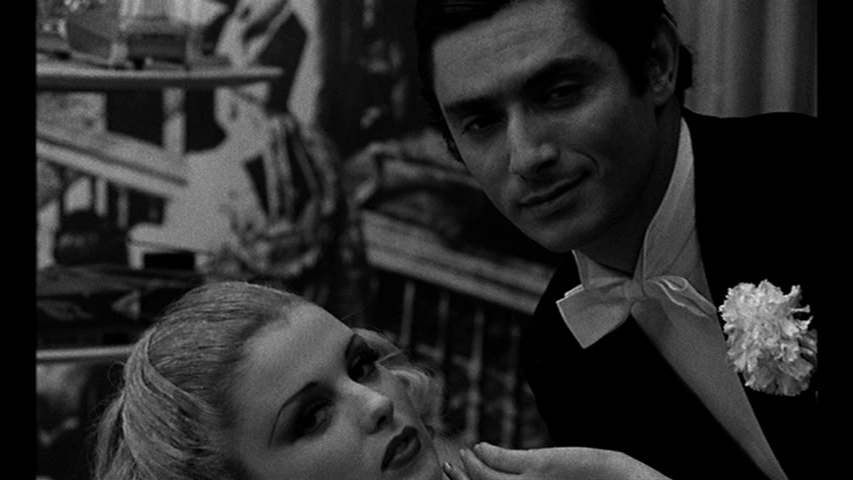
After spending the past week considering cinema’s relationship to voyeurism in my Criterion Reflections entry on Peeping Tom, it occurs to me that Who Are You, Polly Maggoo? offers up an interesting corrolary on that same topic, though coming at the issue from a decidedly different angle than Michael Powell’s sordid tale of an obsessive homicidal misfit with a camera. This anarchic skewering of a fashion culture and industry that Klein helped to create, much lighter in tone on its surface but still wielding a bludgeon every bit as cynical and dismissive of wholesome mainstream tastes, puts us on the other side of the camera, posing its own version of a question that John Lennon would ask a year later in Baby You’re A Rich Man: “How does it feel to be one of the beautiful people?” Klein, of course, is too savvy to just tell us how it feels, but he clearly has a fun time giving us some delirious imagery to stop and take a good long look at.


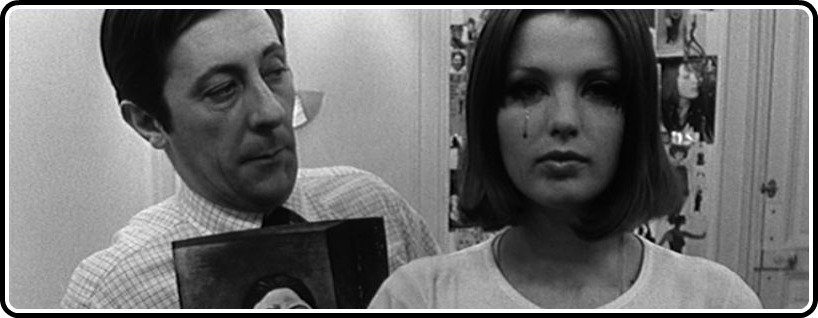

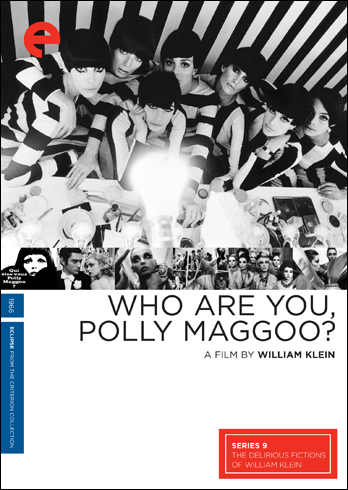

![Bergman Island (The Criterion Collection) [Blu-ray]](https://criterioncast.com/wp-content/uploads/2022/11/bergman-island-the-criterion-collection-blu-ray-400x496.jpg)
![This Is Not a Burial, It’s a Resurrection (The Criterion Collection) [Blu-ray]](https://criterioncast.com/wp-content/uploads/2022/11/this-is-not-a-burial-its-a-resurrection-the-criterion-collection-blu-ray-400x496.jpg)
![Lars von Trier's Europe Trilogy (The Criterion Collection) [The Element of Crime/Epidemic/Europa] [Blu-ray]](https://criterioncast.com/wp-content/uploads/2022/11/lars-von-triers-europe-trilogy-the-criterion-collection-the-element-of-400x496.jpg)
![Imitation of Life (The Criterion Collection) [Blu-ray]](https://criterioncast.com/wp-content/uploads/2022/11/imitation-of-life-the-criterion-collection-blu-ray-400x496.jpg)
![The Adventures of Baron Munchausen (The Criterion Collection) [4K UHD]](https://criterioncast.com/wp-content/uploads/2022/11/the-adventures-of-baron-munchausen-the-criterion-collection-4k-uhd-400x496.jpg)
![Cooley High [Criterion Collection] [Blu-ray] [1975]](https://criterioncast.com/wp-content/uploads/2022/11/cooley-high-criterion-collection-blu-ray-1975-400x496.jpg)
Caught this a few months back, and really dug it. Yeah, it’s quirky and all over the place, but that’s totally its charm, and William Klein totally makes the most of it. I kinda liked how the film built up its own little contained mythos – all the way up to those fantastic illustrations in the closing credit sequence.
And by “kinda,” I of course mean “really.” :)